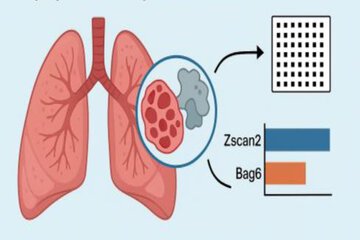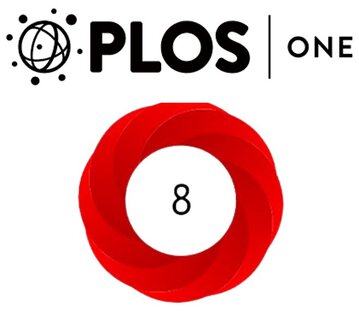Sánchez Carretero L, Cardeñosa Pérez ÀC, Peces-Barba G, Pérez-Rial S. Differential lung gene expression identified Zscan2 and Bag6 as novel tissue repair players in an experimental COPD model
PLoS One. 2024
"LGF triggers partial lung regeneration by activating novel repair genes Zscan2 and Bag6 in experimental COPD-opening new doors to emphysema therapy" – Dr Sandra Pérez Rial
Summary:
Chronic obstructive pulmonary disease is a common chronic lung disease with an ever-increasing incidence. Despite years of drug research and approvals, we are still not able to halt progress or restore normal lung function. Our previous studies have demonstrated that liver growth factor-LGF has an effect on the repair of the affected tissue in a mouse model of cigarette smoke exposure, but by what pathways it achieves this is unknown. The present study aimed to identify differentially expressed genes between emphysematous mice treated with LGF to identify potential therapeutic targets for the treatment of pulmonary emphysema. The emphysema mouse model was induced by prolonged exposure to cigarette smoke. To determine the gene expression profile of the lung in smokers treated or not with LGF, lung messenger RNA gene expression was assessed with the Agilent Array platform. We carried out differentially expressed gene analysis, functional enrichment and validated in treated mouse lung samples. The treated group significantly improved lung function (~35%) and emphysema level (~20%), consistent with our previous published studies. Microarray analysis demonstrated 290 differentially expressed genes in total (2.0-fold over or lower expressed). Injury repair-associated genes and pathways were further enhanced in the lung of LGF treated mice. The expression trends of two genes (Zscan2 and Bag6) were different in emphysematous lungs treated with LGF compared to untreated lungs. Therefore, Zscan2 and Bag6 genes could play a role in regulating inflammation and the immune response in the lung that undergoes partial lung regeneration. However, further studies are necessary to demonstrate this causal relationship.
Why do you highlight this publication?
This publication is highlighted because it advances our understanding of lung tissue repair mechanisms in chronic obstructive pulmonary disease (COPD), a condition with limited treatment options that can halt or reverse disease progression. By using a mouse model of emphysema induced by cigarette smoke exposure, the study demonstrates that treatment with liver growth factor (LGF) leads to notable improvements in lung function and reduced emphysema severity. Most notably, through genome-wide differential gene expression profiling, the research identifies two genes-Zscan2 and Bag6-whose expression is uniquely altered in LGF-treated emphysematous lungs compared to untreated ones. These genes had not previously been linked to tissue repair or COPD, suggesting they may be novel players mediating lung regeneration. The findings indicate these genes could regulate inflammation and the immune response in the context of lung repair, potentially opening up new therapeutic targets for COPD treatment.
Publication commented by:
Dr. Sandra Pérez Rial
Molecular Genetics Department
GENETICS AND SENSORINEURAL PATHOPHYSIOLOGY GROUP. IRYCIS



